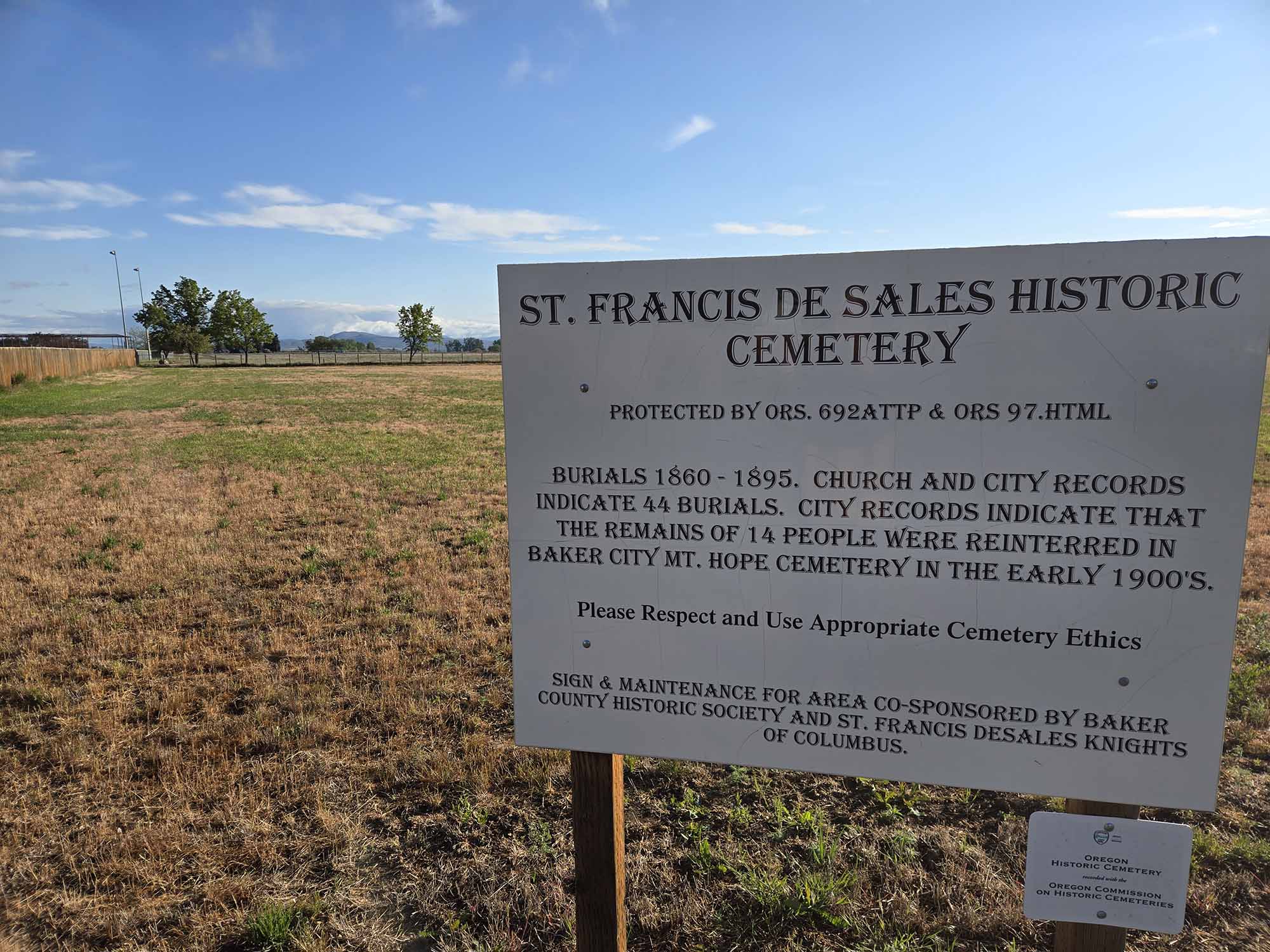City unveils ‘vision 2030’ concept
Published 11:33 am Wednesday, March 10, 2010
Draft plan is culmination of community visioning process that incorporated comments from 114 residents
The vision of a spruced up Baker City, where young families can
make a home because there are more jobs that pay near the Oregon
average of $45,000 a year, and where businesses thrive serving
travelers and a local population of 15,000 to 20,0000, came to life
during a presentation to the City Council Tuesday night.
The draft Vision 2030 plan was presented by Don Chance, the city’s contract planner.
Chance described Campbell Street as a landscaped grand boulevard
designed to entice travelers to explore the rest of the city, where
they’ll find a thriving artisan center in the historic downtown core,
and an updated Broadway Street corridor leading to the bustling
retro-1950s neon-lit 10th Street.
Chance said beautifying the main thoroughfares of Campbell, Main,
Broadway and 10th streets, and building on the themes that are already
part of the attraction of those business districts, will help Baker
City enhance its reputation as a tourist attraction and benefit local
businesses.
Gone are the days when Baker City was a bustling mill town, and
Chance, a former timber industry insider, said global competition in
the wood products industry has made it highly unlikely that Baker City
will ever experience another timber industry boom.
Although there are opportunities for ancillary wood products businesses such as biomass producers that employ as many as 30 workers, Chance said the city can also cash in on tourism-related commerce.
He cited Councilor Beverly Calder’s Bella Main Street Market and Mayor Dennis Dorrah’s York’s Grocery and Sporting Goods as the type of destination retail businesses capable of drawing tourists and other clientele to town.
Calder pointed out that one of the keys to success for retail businesses, whether they cater to tourists, locals or both, is to be open evenings and weekends so people can buy rather than just window shop.
Chance said the Vision 2030 plan is the culmination of a process that involved 114 people who participated in about 140 meetings.
One of the things that was strongly supported at those meetings was the concept of enhancing the 1950s neon business district along 10th Street.
“It’s a way to provide people with a couple of experiences,” Chance said. The retro 50’s is something a lot of us knew as children.”
The draft vision presented Tuesday also proposes expanding the urban growth boundary east of Interstate 84 as a neo-modern area.
Chance pointed out that while most everyone who has participated in the meetings felt strongly about retaining Baker City’s small town friendly character, most also recognized the need for more good job that attract families, including school-age children.
Chance said most people recognize that Baker City is at a junction, where decisions made now and carried out over the next 20 years will determine whether the city becomes more of a retirement community with a lot of balding middle-aged men – like him, Chance joked – or grow and prosper enough to create job opportunities for future generations.
“We were at one time a hustling, bustling mill town of working guys. We are now a retiring working community,” Chance said. “It’s a bunch of old guys. We need to retain younger people to have a healthy community.”
He said a town is healthiest when its population is diverse in age, culture and political viewpoints.
The draft Vision 2030 plan will be disseminated around town to solicit comments from residents, then amended and ultimately incorporated into Baker City’s comprehensive plan update, which was last done in the 1980s and is long overdue, Chance said.
Fee increases discussed
The Council also discussed a resolution that would increase several fees, including a 1.6 percent boost for water bills and 20 percent hikes for cemetery services.
Councilors took no action on the resolution, but they will vote on the fee increases at a future meeting.
Other Business
In other action Tuesday the Council heard from a group of miners, led by Ed Hardt of the Eastern Oregon Mining Association, who urged the Council to become a coordinating agency to better represent the interests of workers, business owners and other residents on issues relating to planning and managing federal lands and resources, from timber and water to mining and livestock grazing.
Hardt cited the EPA’s proposed tightening of mercury emissions standards that threaten the Ash Grove Cement plant in Durkee, and a pending lawsuit between the Forest Service and the city over the width of the city’s 1866 easement along the old leaky water pipeline the city plans to replace.
The city’s negotiating power would be enhanced if it signed on as a coordinating agency, Hardt contends.
“As you may know we have a mandate from the federal government to treat our water for cryptosporidium in the water,” Dorrah said.
Complying with the unfunded federal mandate by installing an ultraviolet treatment system could cost the city an estimated $2.5 million, which the city will ultimately have to pass to residents through higher water bills, Dorrah said.
“This is a big cost to the city, and we are not sure we need it,” Dorrah said.
By becoming a coordinating agency, the city could be in a better position to negotiate with federal agencies that mandated the water treatment, said Guy Michael, who joined Hardt and others in talking about the issue.
“The real kick of coordinating is the agency must deal with local government on an equal basis,” Michael said.
He said federal agencies, as well as state agencies like DEQ that get federal funding, are required by law to consider the effects management plans or other federal actions or projects will have on people, businesses and the local tax base, Michael, Hardt and others told the City Council.
“The use of natural resources to make products is part of the culture and economy of Oregon, the counties and cities,” Michael said.
The management of resources such as forests is up to the agencies, and becoming a coordinating agency doesn’t require or even allow a city or county government to dictate or pay for those management activities, but it does give local government equal footing that the agency must recognize and accommodate in generating forest plans and other activities, he said.
Hardt pointed out that Baker County adopted a coordinating plan in 2001, and while it hasn’t been fully utilized by the county, he thought it could serve as a starting point for a city plan.
Councilor Andrew Bryan suggested that Hardt and others who promote coordinating status attend a future Council work session so they can educate the Council more thoroughly.
Codes, franchise deal
In other business the council approved the second reading of an ordinance adopting changes to city codes, granted an extension of the Charter Communications cable TV franchise through the end of this year, and proclaimed this week as Girls Scouts week in Baker City.
On the cable franchise extension, Jennifer Watkins, assistant city manager, reported that Charter is in bankruptcy but has been continuing to provide cable television services without a contract since June of 2008.
The company submitted a request for an extension through September of 2011, but after Bryan, Calder and others expressed concerns about complaints they and other council members and city officials have received about poor reception, and services provided to Pendleton and La Grande but not to Baker City, the Council voted to approve a shorter extension of the contract.
The Council hopes the bankruptcy will be over by then and that the shorter extension will give city officials more leverage to negotiate for added services and equipment needed to improve reception and picture quality.





